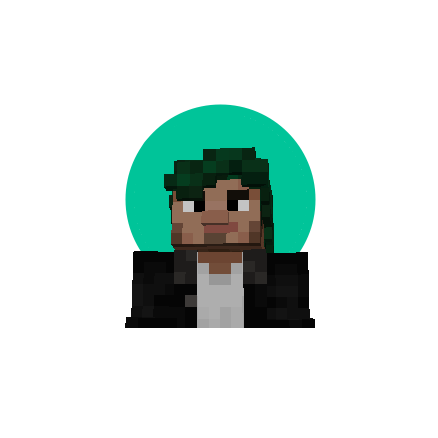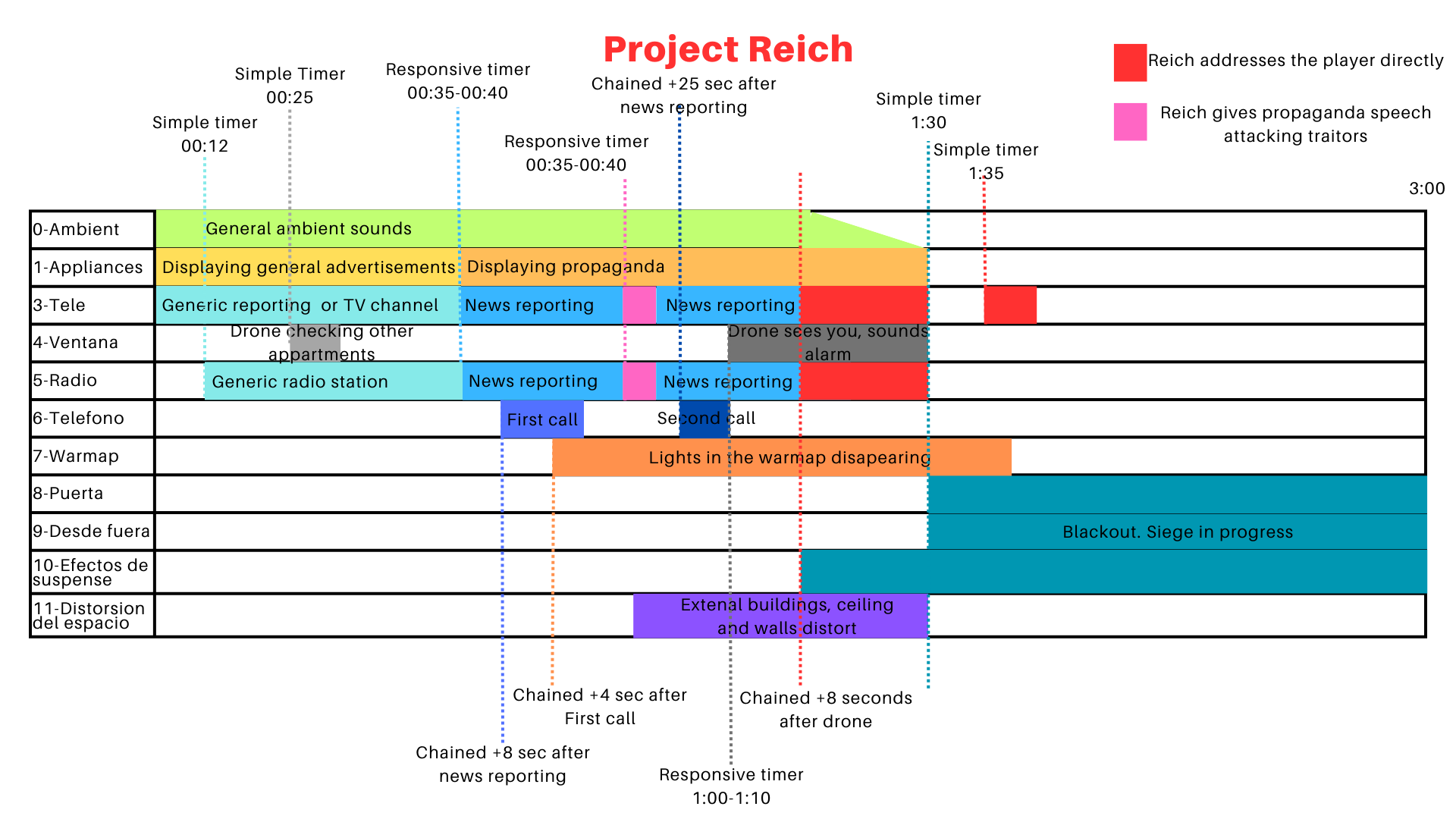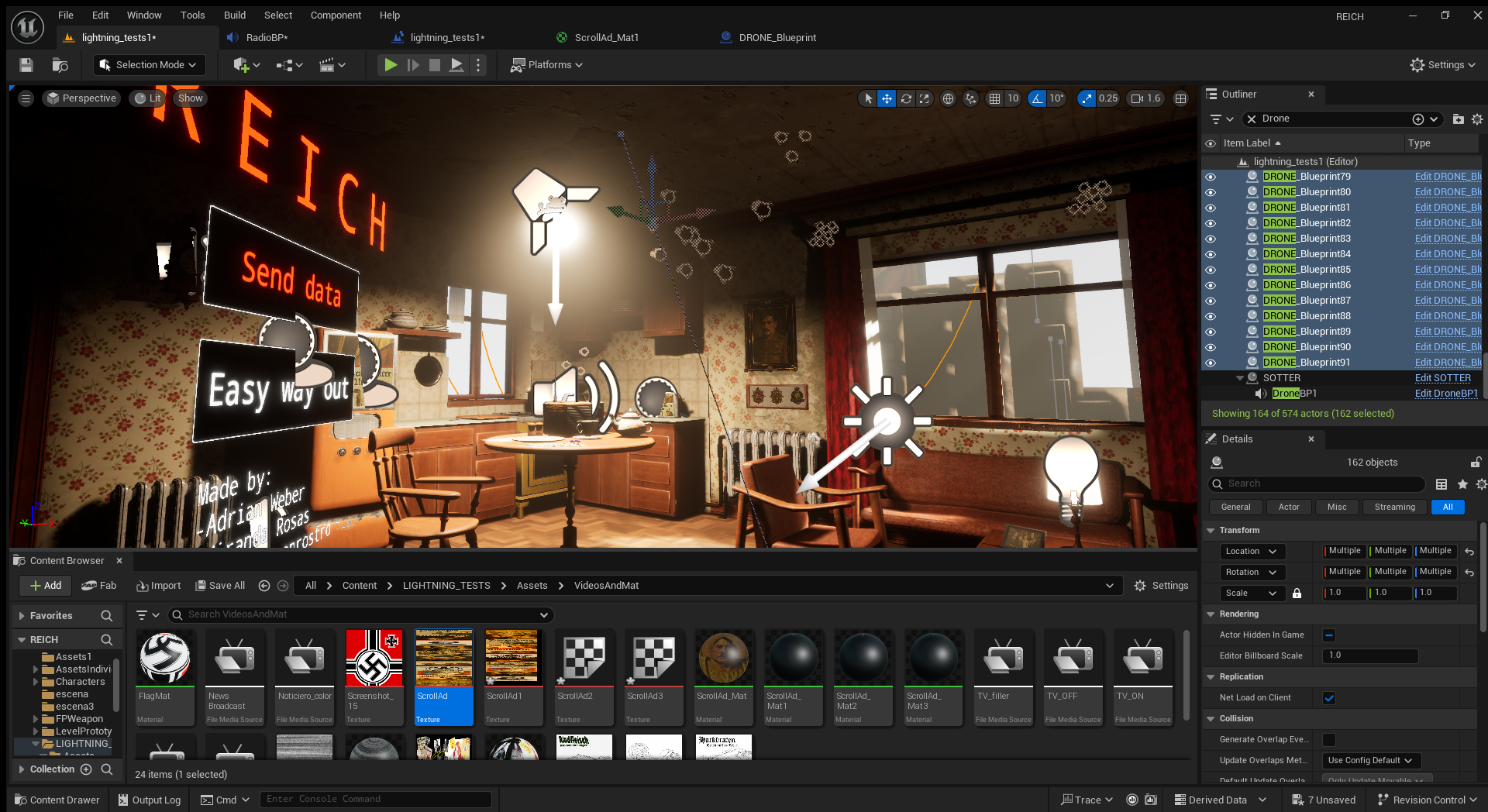REICH
2025
Summary
Trigger warning: Historical racism, fascism and hate symbols
This VR experience is a derivative work inspired on the Wolfenstein game series.
The player finds themselves in the shoes of Frank Webley, a british spy infiltrated in nazi territory after they won the war. Settled in a small appartment that serves a hidden base of opperations, the player experiences life under this regime, being bombarded by propaganda and surveillance, that eventually lead to their discory and death.
The experience focuses on making the player feeling uncomfortable and invaded in their own space, and doesn’t shy away from using historical hate symbols to portray a satirical yet menacing fascist regime.
Engine: Unreal
Platform: PC
Role: Narrative and game design, director, programmer
Team: Adrian Weber (Modeling, texturing and concept art), Miranda Lucia (Sound design and concept art).
Narrative events timeline
Critical line and event system chains
Scene building in Editor
Programming using Blueprints
Drones patroling the outside city
My contribution
Narrative designer
Constructed a scenario focused on enviromental story telling, where the player has the oportunity to find and piece together multiple story elements hidden in details of the scenario.
Wrote a story focusing on taking the player through a dramatic curve that makes them feel vulnerable and exposed.
Game Designer
Focusing on the 360 degree aspect of VR, I designed narative elements that direct the player’s attention with directional sound and lights, so that the player is always engaged with the enviroment around them. These elements are timed so that the player has time to identify the source and engage in them so they don’t miss a bit of the main story.
Director
Designed and kept track of cohesion of narrative and aesthetic elements across diferent aspects of production, curating elements that would satisfy the end vision, and would take the player through an intensifying dramatic narrative curve
Programmer
Utilizing Unreal’s blueprint system, and a focus on Object Oriented Programming, I programmed the experience modularly, so that all assets could be replaced and adjusted based on the design, and playtesting trials.
Postmortem
What went well
Thanks to the attention to detail in audio and modeling/texturing departments, the atmosphere is very immersive and rich in both story and aesthetic.
We had a very clear vision and thanks to our coordination we managed to adhere to deadlines and stay on date with development, without compromising on quality.
What went wrong
Due to my unfamiliarity with Unreal Engine, I had to learn how to implement simple things like directional audio along the way. This led to stumbles where I had to assign time to go back and fix simple systems, wich ultimately led to a hard crunch period to compensate from my part.
We encountered a bug using Unreal where out game builds would have glitched lightning, but we were unable to reproduce this on editor. Due to time constraints, we had to disable the faulty lights, wich led to a dip in quality
What I learned
It pays to be cautious. Many of our problems during the project could have been dealt with more elegantly had we tested for them earlier. Playtesting and future proofing must be an important part of the process as soon as possible to avoid problems down the line.
I learned the hard way that even using revision control like GitHub, it is always better to save and backup constantly.






